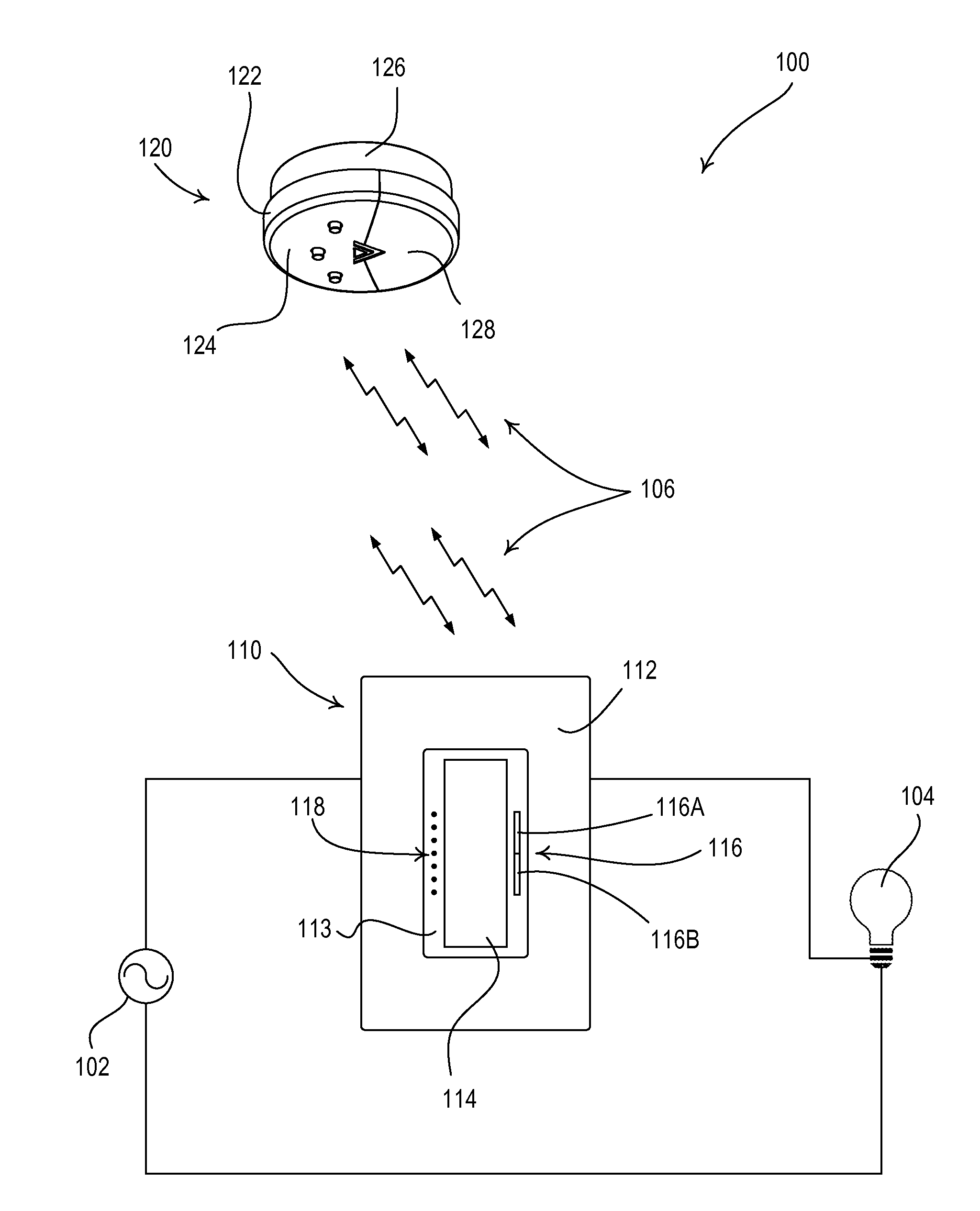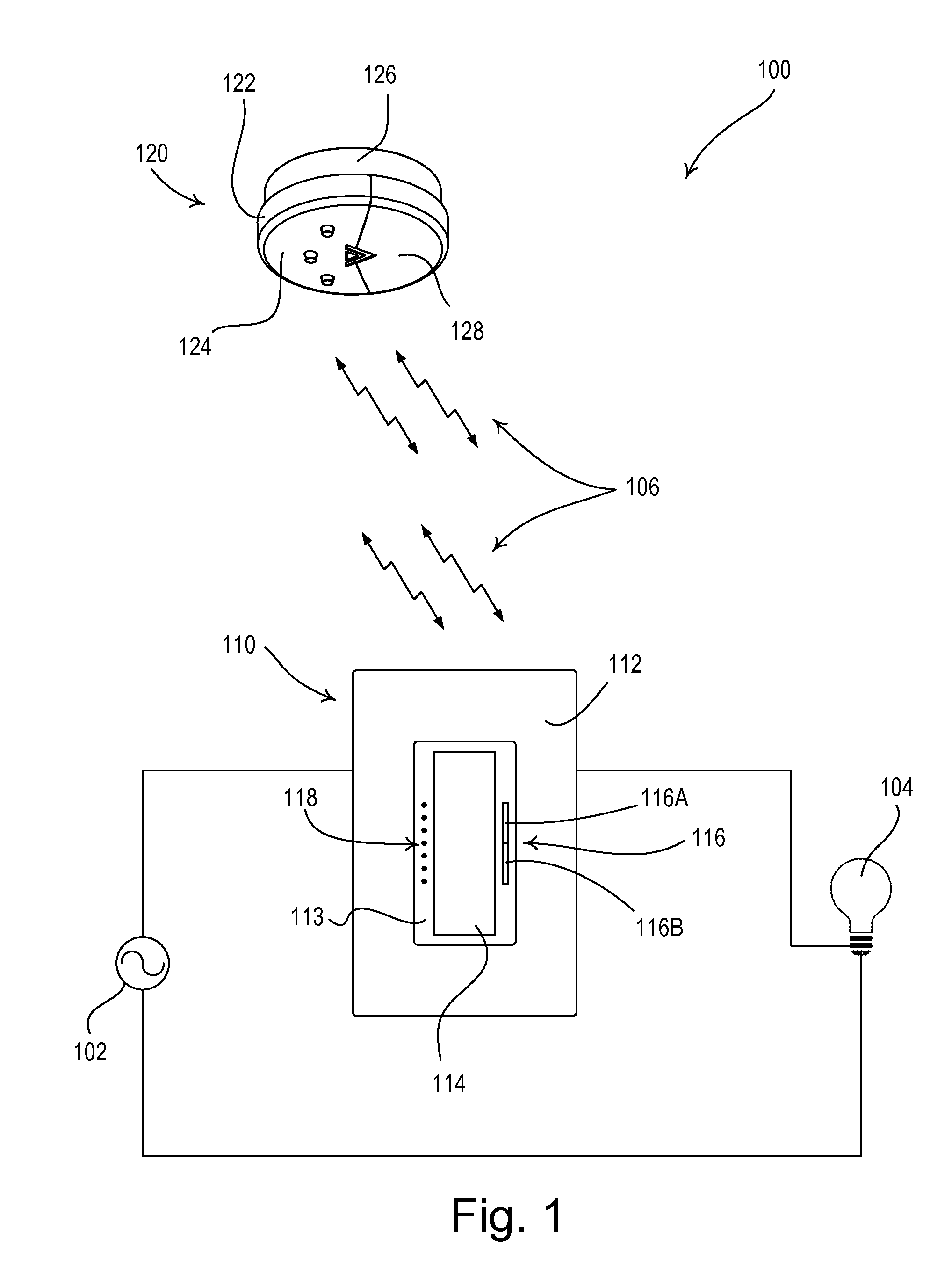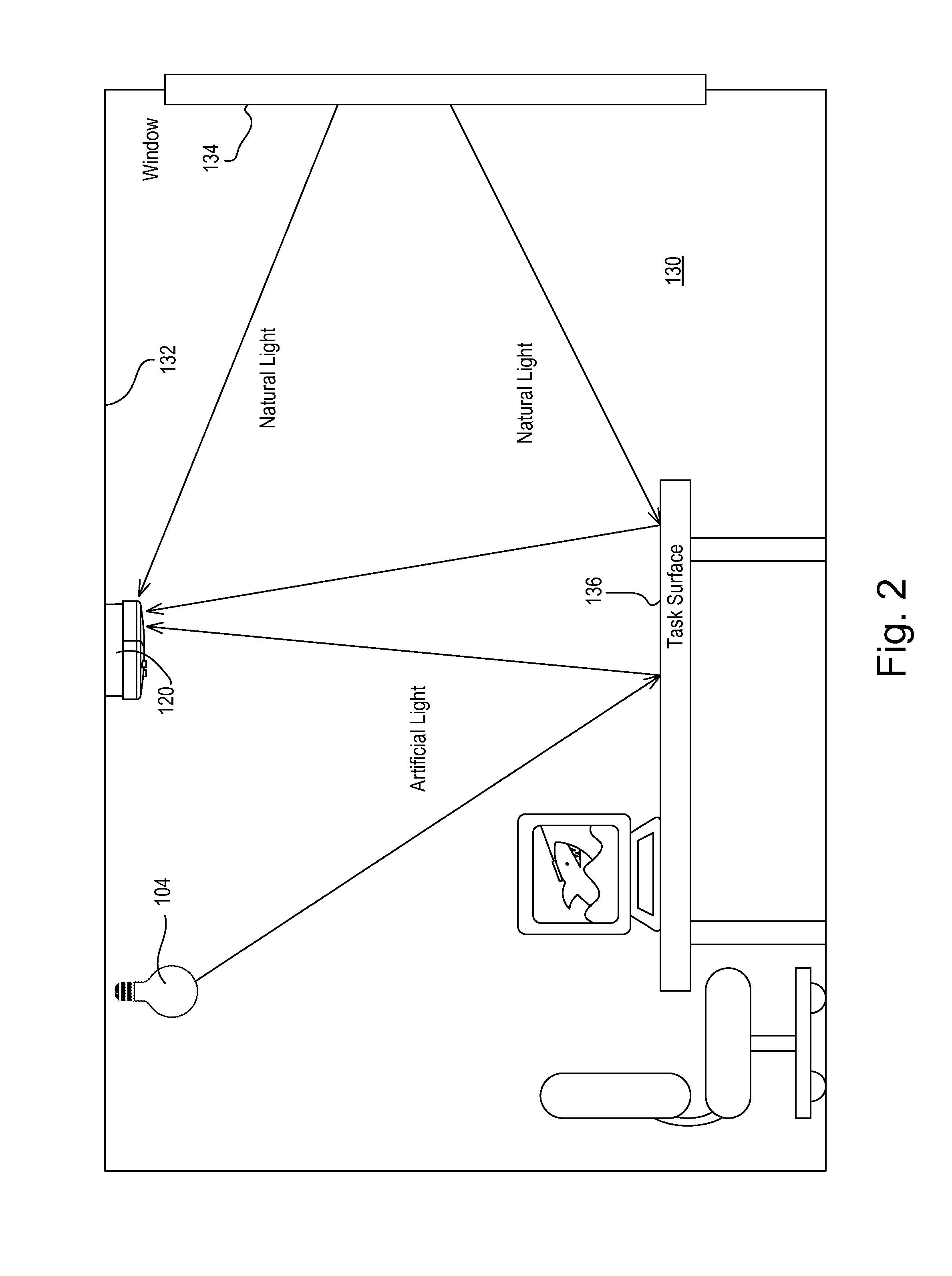Method of Calibrating a Daylight Sensor
a technology of daylight sensor and calibration method, which is applied in the field of daylight sensor, can solve the problems of tedious calibration procedures of most prior art daylight sensor and many steps
- Summary
- Abstract
- Description
- Claims
- Application Information
AI Technical Summary
Benefits of technology
Problems solved by technology
Method used
Image
Examples
first embodiment
[0044]FIG. 1 is a simple diagram of a radio-frequency (RF) lighting control system 100 comprising a load control device (e.g., a dimmer switch 110) and a daylight sensor 120 according to the present invention. The dimmer switch 110 is adapted to be coupled in series electrical connection between an alternating-current (AC) power source 102 and a lighting load 104 for controlling the amount of power delivered to the lighting load. The dimmer switch 110 may be wall-mounted in a standard electrical wallbox, but could alternatively be implemented as a table-top load control device. As shown in FIG. 1, the dimmer switch 110 comprises a faceplate 112 and a bezel 113 received in an opening of the faceplate. The dimmer switch 110 further comprises a control actuator 114 (i.e., a button) and an intensity adjustment actuator 116. Actuations of the toggle actuator 114 toggle, i.e., turn off and on, the lighting load 104. Actuations of an upper portion 116A or a lower portion 116B of the intens...
third embodiment
[0092]FIG. 15B is a simplified high-level flowchart of a semi-automatic daylight sensor calibration procedure 1170 completed by a user to enable a first daylight sensor to determine the appropriate gain M according to the present invention. The user first mounts the first daylight sensor to the ceiling 132 at step 1172, and then places a second daylight sensor on the task surface 136 at step 1174. The user then adjusts the present light intensity LPRES of the lighting load 104 to achieve the target total light intensity LTRGT-TASK on the task surface 136 at step 1176 using, for example, the raise and lower buttons 152, 154 of the second daylight sensor. After the user actuates the calibration button 150 on the second daylight sensor once at step 1178, the first daylight sensor measures the total light intensity LT-SNSR at the first daylight sensor at step 1180, the second daylight sensor measures the total light intensity LT-SNSR at the second daylight sensor at step 1182, and the s...
fourth embodiment
[0095]FIG. 16 is a simplified flowchart of a startup procedure 1200 executed by the controller 230 of the daylight sensor 120 each time the controller is powered up at step 1210 according to the present invention. If there is not operational data (i.e., the daylight gain GD and an electric light gain GE) stored in the memory 246 at step 1212, the controller 230 sets the daylight gain GD equal to a default daylight gain value GD-DEF (e.g., approximately 1.5) and the electric light gain GE equal to a default electric light gain value GE-DEF (e.g., a large number, such as 256) at step 1214. The default daylight gain value GD-DEF is an assumption of a daylight gain of a typical room in which the daylight sensor may be installed. In addition, the controller 230 of the daylight sensor 120 sets total light intensity LT-TASK on the task surface 136 and a maximum light intensity LEM-TASK on the task surface 136 from only the lighting load 104 equal to the total task surface light intensity L...
PUM
 Login to View More
Login to View More Abstract
Description
Claims
Application Information
 Login to View More
Login to View More - R&D
- Intellectual Property
- Life Sciences
- Materials
- Tech Scout
- Unparalleled Data Quality
- Higher Quality Content
- 60% Fewer Hallucinations
Browse by: Latest US Patents, China's latest patents, Technical Efficacy Thesaurus, Application Domain, Technology Topic, Popular Technical Reports.
© 2025 PatSnap. All rights reserved.Legal|Privacy policy|Modern Slavery Act Transparency Statement|Sitemap|About US| Contact US: help@patsnap.com



